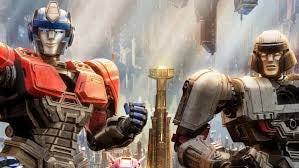As His Three Daughters, the latest from writer-director Azazel Jacobs, opens, three wildly different sisters have gathered in a not-nearly-large enough Manhattan apartment to settle the affairs of their father (Jay O. Sanders) as he enters the final stage of palliative care. Over the years, the three—tightly wound control freak Katie (Carrie Coon), relentless cheerful and flighty Christina (Elizabeth Olsen) and pothead gambler Rachel (Natasha Lyonne)—have grown estranged and coming together again to fill out forms, work on the obituary and watch their father die only serves to exacerbate the vague estrangement that has already developed between them over the years. This is most evident in the increasingly strained relationship between Katie and Rachel—the former constantly critiques everything that the latter does, even though it was Rachel who has lived with and single-handedly taken care of their dad over the last few years when the others could hardly bother. Tensions continue to rise and fall between the three over the course of the film as they are forced to come to terms with both their shared past and the notion of facing a future without the presence of the one thing that they all shared.
I confess that I have not particularly cared for Jacobs’s previous films (which include Terri, The Lovers and French Exit) and while His Three Daughters is easily the strongest of his features to date, it is still an occasionally uneven exercise at times. With its single central location (occasionally going to a bench outside the apartment building where Rachel has been banished to light up, even though she is the only one of the sisters who isn’t technically visiting) and limited cast, the film has the feel of a stage play that is further underscored by the overtly theatrical nature of the monologues that most of the key characters are required to deliver at certain points. Of the three sisters, the film sympathizes most clearly with Rachel but in doing so, it fails to develop the characters of Katie and Christina beyond their initial broad brushstrokes, which has a tendency to throw the delicate balance between the three out of whack at times. The film also takes a big dramatic swing towards the fantastical in the final stretch towards the end that just doesn’t work, especially since it is often brutally accurate in its observations up til then of all the thoughts, feelings and strange details that one cannot help but notice during the experience of watching a loved one slowly slip away.
And yet, when His Three Daughters does work, it makes for an often powerful viewing experience. As I said, those who have undergone a situation similar to the one depicted here will recognize how well Jacobs has captured that particular emotional rollercoaster—so well, in fact, that it might prove to be too much for those who have recently undergone such a loss. More significantly, it contains strong performances from all three of its leads. Although stuck with the most thinly developed character, Coon’s work is strong enough to overcome Katie’s one-note nature. Olsen, perhaps energized by the fact that this is her first performance in a non-MCU-related property in a long time, is also very good as well, especially in the second half when the cracks begin to show in her hippie-dippie facade and Christina begins to feel like a real person instead of a concept. Best of all is Lyonne, whose alternately funny and bruisingly poignant work as Rachel serves as the film’s true heart and soul and marks yet another in a string of knockout recent performances from her. Granted, His Three Daughters may occasionally be a bit messy and contrived and it may not be the kind of film that you are going to want to fire up to relax with after a long day but in its best moments, it packs the kind of emotional punch that most viewers will find hard to shake afterwards.
Now entering its 40th year of existence, the Transformers franchise goes back to its roots with Transformers One, a film that not only marks the first animated entry in the series since the initial 1986 film (which marked the final screen credit for Orson Welles) but which presents the heretofore untold origin story of how franchise icons Optimus Prime and Megatron came to be and how they went from inseparable friends to mortal enemies. Back on the planet Cybertron, the two, initially known as Orion Pax (Chris Hemsworth) and D-16 (Bryan Tyree Henry), live in a society where elites like Sentinel Prime (Jon Hamm) have the power to transform and where powerless ones like them spend their days toiling in mines deep below the planet’s surface to extract the power source that keeps things running. While D-16 is content to follow orders, the more ambitious Orion believes that there is more to their existence than that and, following the usual array of contrivances, the two, along with snarky supervisor Elita-One (Scarlett Johansson) and goofball co-worker B-127 (Keegan-Michael Key), go on a quest that eventually reveals that there is more to the power dynamic of Cybertron than meets the eye, a discovery that provides the initial fracture between Orion, who is dedicated to bestowing freedom and power to his fellow bots, and the enraged D-16, who is consumed with notions of getting revenge after discovering that everything he knew and believed was a lie.
As someone who has never really had much of a working interests in the Transformers film franchise as a whole—the only one of them that I have actually liked was the genuinely engaging spinoff Bumblebee, I am probably not the person that you should be going to for an evaluation of the potential value of Transformers One by a long shot. That said, while it doesn’t quite manage to approach the quality of the aforementioned Bumblebee, it is certainly beats all of the others like the proverbial gong. By making the move from live-action to animation and by eliminating the human characters whose storylines often dragged the proceedings to a dead stop, the film is, oddly enough, lighter on its feet (including a number of inspired and winning sight gags) and better able to channel a sense of imagination that was often lost amidst the ponderous narratives and extended action beats of the earlier films. Additionally, the robots themselves have been given a little more development this time around and while the film probably won’t have a place of prominence in the highlight reels of the famous actors supplying their voices (who also include Laurence Fishburne and Steve Buscemi), they do a better job than one might have imagined possible at injecting them with something actually resembling personalities.
However, this is still a part of the Transformers universe and as the story begins to shift its focus in order to fit in with the already-existing lore in the last third, it becomes progressively less interesting with D-16’s embrace of his dark side is handled in a particularly abrupt manner and the eventual break with Orion does not hit with the kind of resonance that it was clearly meant to have. Visually, it is fine but outside of a couple of intriguingly quirky touches (like the sight of robo-deer grazing on the surface of Cybertron), director Josh Cooley (whose previous film was Toy Story 4) doesn’t really bring much in the way of a distinctive touch to the proceedings, though that may be less his fault and more an edict from the good folks at Hasbro to not rock the boat by going too far off the reservation. In the end, if you are under no cloud of nostalgia or personal obligation that requires you to see Transformers: One, there is no real reason for you to rush out and see it and you can be assured that you won’t be missing much if you don’t. That said, this one, unlike most of the previous franchise entries, at least actually tries to make for a decent movie and even if it doesn’t quite accomplish that in the end, the fact that it least makes an effort in that direction for once is greatly appreciated.





